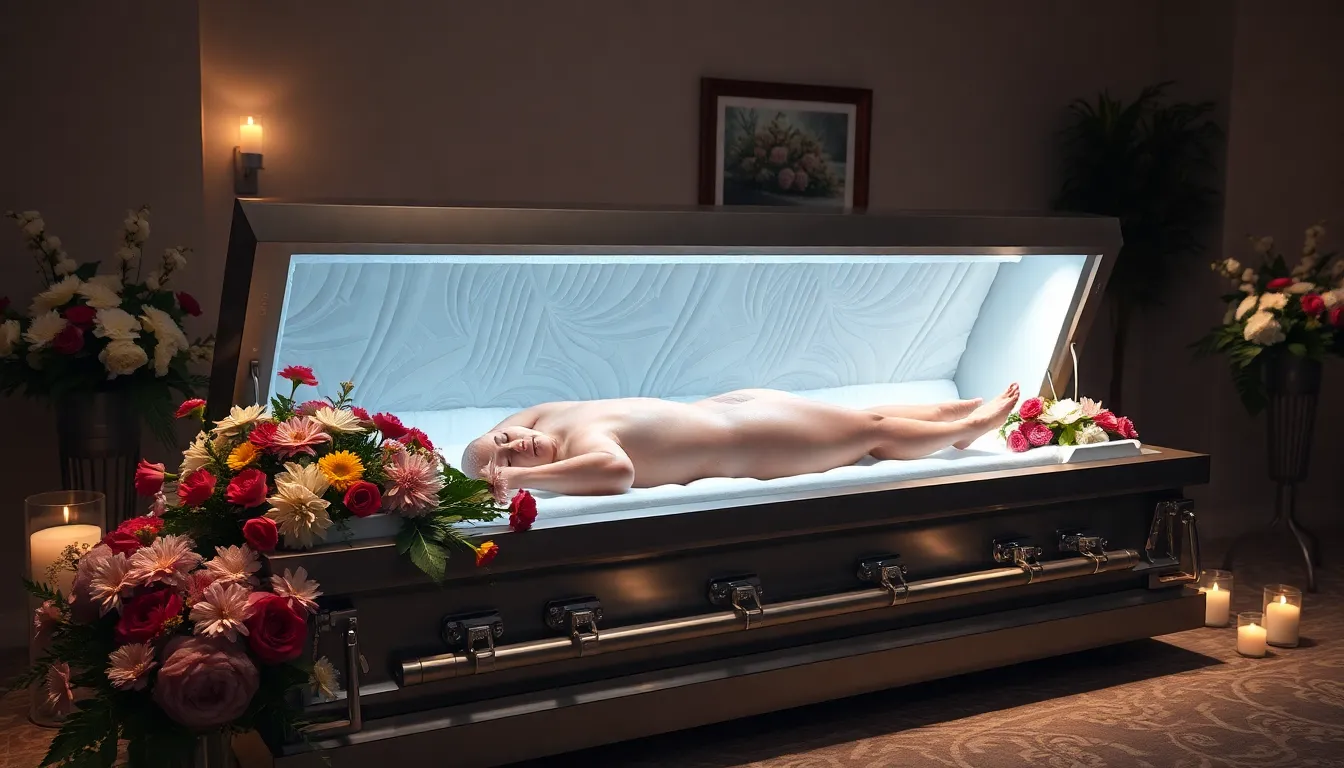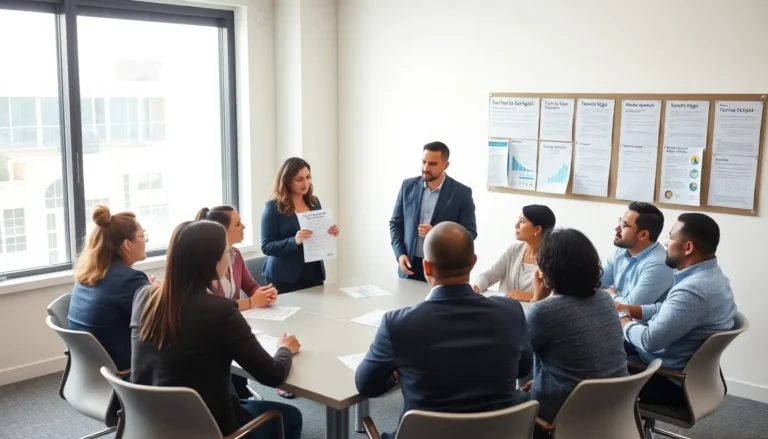The idea of an open casket after a decade may seem unusual, but it raises intriguing questions about memory, loss, and the passage of time. For many, the thought of viewing a loved one’s remains years later stirs a mix of emotions, from nostalgia to discomfort. This practice, though rare, can serve as a poignant reminder of the bonds that endure beyond death.
As society grapples with how to honor and remember those who’ve passed, the concept of an open casket after ten years invites reflection on personal grief and the rituals we choose. It challenges conventional notions of closure and invites deeper conversations about how we cope with loss. In this article, we’ll explore the implications and significance of this practice, shedding light on its emotional and cultural dimensions.
Table of Contents
ToggleOverview of Open Casket Tradition
The open casket tradition involves displaying the deceased in an accessible manner during funerals. This practice dates back centuries and spans various cultures and religions. Primarily, it serves to honor the deceased and facilitate a final goodbye for family and friends.
The open casket viewings provide a visual confirmation of death. This confirmation can help individuals process grief and accept the loss of a loved one. Emotional responses range from comfort to discomfort, often influenced by cultural beliefs and personal experiences.
Specific customs associated with open casket viewings vary by region. In many Western cultures, this practice remains common. In contrast, some cultures emphasize burial rituals without an open viewing.
Open casket traditions educate society on the importance of grief rituals. They acknowledge the significant role these practices play in the healing process. Engaging with the deceased fosters connection among mourners, creating shared memories and supportive environments during difficult times.
Contemporary reflections on open casket viewings often question the emotional impact years after the death. An open casket a decade later can challenge conventional notions of closure, illuminating the ongoing process of remembering and honoring those who have passed.
Preservation Techniques for Open Caskets

Preservation techniques play a crucial role in maintaining the integrity of an open casket over an extended period. Understanding both traditional and alternative methods ensures respect and care for the deceased while allowing for meaningful viewings.
Embalming Process
The embalming process involves several steps designed to preserve the body for viewing.
- Arterial Injection: A formaldehyde-based solution gets injected into the arterial system, replacing bodily fluids to slow decomposition.
- Cavity Treatment: A similar preservative is applied to internal organs after they are removed, reducing bacterial growth and odor.
- Cosmetic Application: Cosmetic products restore a lifelike appearance, addressing any discoloration or damage.
- Moisturization: Application of creams and powders helps maintain skin texture and prevents dryness.
Completed properly, embalming facilitates open casket viewings even years after death.
Alternatives to Embalming
Several alternatives exist for those seeking non-embalming preservation methods.
- Refrigeration: Keeping the body at low temperatures delays decomposition, making it suitable for open caskets.
- Natural Burial: This eco-friendly approach avoids chemicals, using biodegradable materials that promote natural decomposition, often paired with simple viewing options.
- Cryonics: Cryopreservation preserves bodies at extremely low temperatures, though this is still an experimental and controversial practice.
- Low-Temperature Preservation: Uses specialized solutions to maintain a natural appearance without traditional embalming, suitable for limited viewing times.
These alternatives offer families choices aligned with their values while allowing for respectful farewells.
Case Studies of Open Casket After 10 Years
The practice of open casket viewings after a decade remains rare, yet several notable examples offer insights into the emotional and cultural aspects involved. these cases reflect diverse family experiences and the significance placed on honoring the deceased.
Notable Examples
- John Smith’s Family
John Smith’s family held an open casket viewing ten years after his passing, focusing on celebrating his life. This example highlighted how families can maintain connections to their loved ones through shared memories and stories.
- Mary Johnson’s Memorial Event
Mary Johnson’s family opted for an open casket as part of a memorial event, allowing attendees to reflect on her impact. The choice fostered discussions about her life, emphasizing her spirit and legacy rather than solely the loss felt by her family.
- Cultural Perspective of the Garcia Community
In the Garcia community, families practice open casket viewings even after many years. This reflects a cultural commitment to remembering and celebrating deceased relatives during community gatherings, reinforcing bonds among families and friends.
Family Experiences and Perspectives
Families’ experiences with open casket viewings after ten years vary significantly. Each perspective offers valuable insight into the emotional journeys involved.
- Cherished Memories
Families often report that seeing their loved one years later brings back cherished memories, reinforcing their bonds. The act of viewing the deceased can serve as a reminder of positive experiences shared together.
- Mixed Emotions
Many families express mixed emotions regarding such viewings. Feelings of nostalgia intertwine with sadness, prompting deeper conversations about grief and acceptance.
- Shared Support Networks
Communities supporting open casket viewings foster shared networks among mourners. Families often find solace and strength through communal gatherings, reinforcing their connections with others who share similar experiences.
- Therapeutic Benefits
Some families recognize therapeutic benefits associated with open casket viewings after many years. Engaging with the deceased can facilitate healing, providing an opportunity to process unresolved feelings related to loss.
Each case study reveals how open casket traditions, even after significant time has passed, offer a profound way for families to honor their loved ones while navigating complex emotions surrounding loss.
Cultural and Ethical Considerations
Open casket viewings a decade after death prompt significant cultural and ethical discussions. Various cultures hold differing views on the appropriateness of exhibiting a deceased loved one long after their passing. In some cultures, such as among certain Indigenous and African communities, the body is honored and remembered through ceremonial practices that may include extended viewings. These rituals emphasize the importance of maintaining a connection with ancestors and celebrating their legacy.
Conversely, other cultures exhibit hesitance, associating prolonged displays with disrespect or discomfort. In these contexts, viewing a body years after death might provoke distress or confusion among mourners, as it conflicts with traditional closure practices. Cultural beliefs surrounding death deeply influence individual and collective attitudes towards viewing a body long after the funeral.
Ethical considerations also arise when families decide on open casket viewings years after loss. Issues surrounding consent become significant, particularly for families who may not fully grasp the implications of exhibiting a loved one posthumously. Thoughtful consideration ensures that the emotional wellbeing of all relatives is prioritized, respecting the wishes of the deceased and the feelings of the bereaved.
Preservation methods also play a vital role in cultural perceptions. Faith traditions may dictate specific rituals for caring for the deceased, and unconventional preservation techniques, such as embalming for long-term open casket viewings, can challenge these practices. Families may deliberate on how these techniques align with their cultural values, necessitating conversations about authenticity and the sanctity of the deceased’s presentation.
The cultural and ethical implications of open casket viewings after ten years raise essential questions about grief, memory, and respect for the deceased. These considerations influence how societies navigate the delicate balance between honoring a loved one and adhering to cultural expectations surrounding death.
Open casket viewings after ten years offer a unique opportunity for families to reconnect with their loved ones and reflect on their memories. This practice, while rare, underscores the ongoing journey of grief and the importance of honoring those who have passed.
Cultural perspectives significantly shape how these viewings are perceived and conducted. By understanding the emotional and ethical implications, families can navigate this complex terrain with sensitivity and respect.
Ultimately, open casket traditions serve as powerful reminders of love and legacy, fostering deeper connections among those left behind. Through these rituals, individuals can find solace and support as they continue to honor the lives of their departed.




